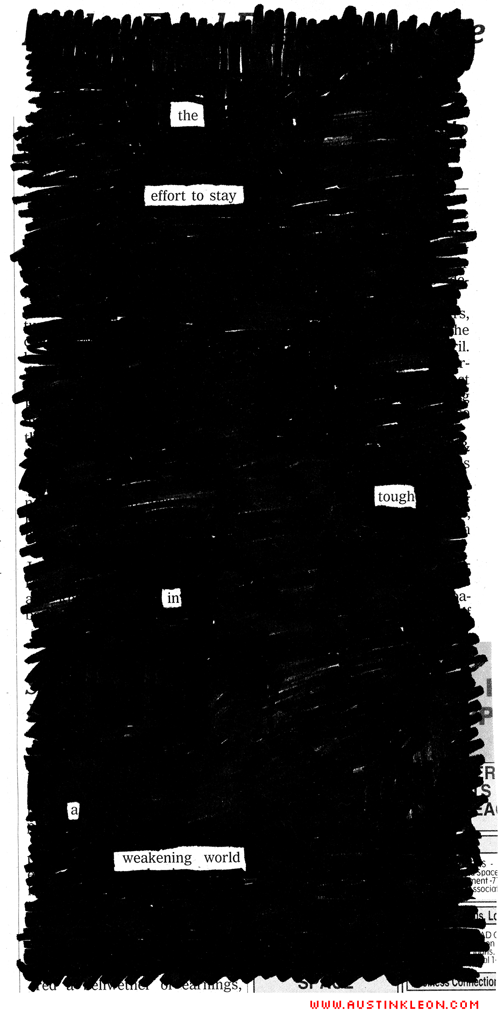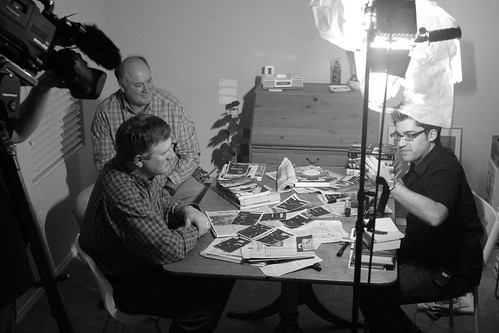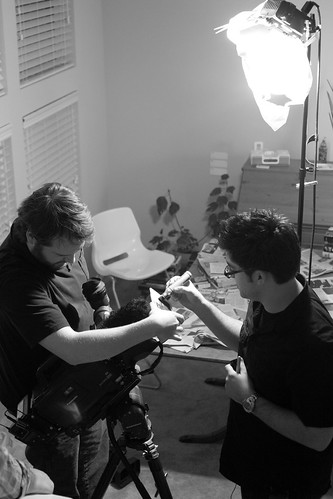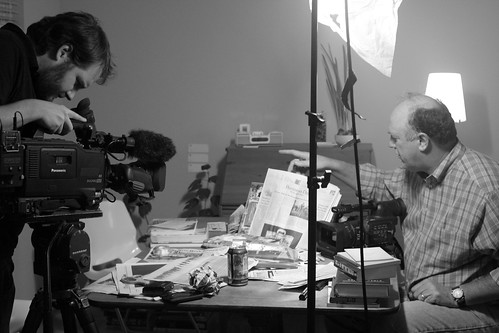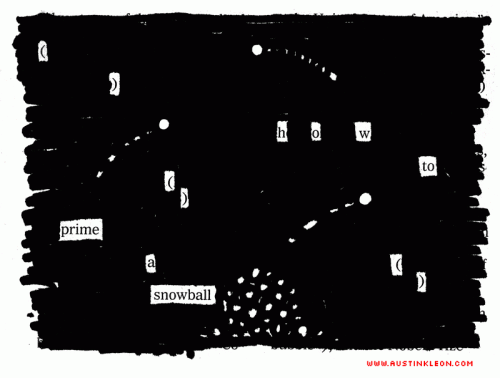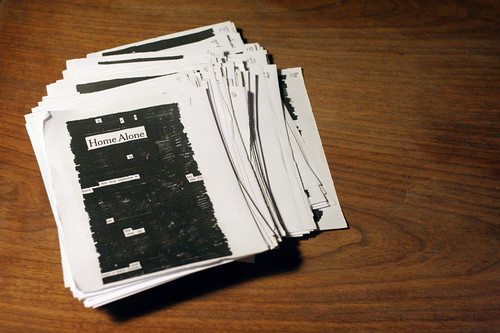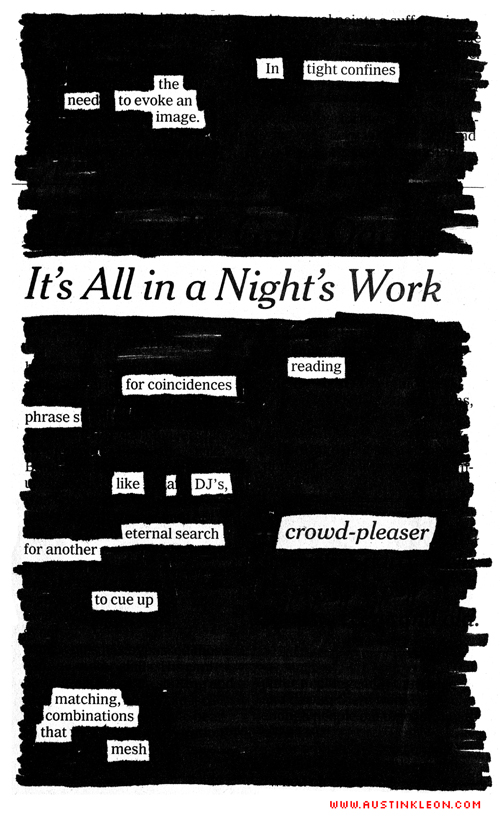
I tried to keep as many “poems about making poems” out of the book as possible, and so this one got cut. Done from an article about another Midwesterner using collage to make his art, Greg Gillis (a.k.a. Girl Talk).
In the late 1950s, Brion Gysin, originator of the cut-up technique, and his buddy William Burroughs who ran with it, had this idea: writing is fifty years behind painting. And so, they looked to collage.
Last week the New Yorker an article by Louis Menand about the writer (and native Texan) Donald Barthelme, examining Barthelme’s fascination with collage.
Having worked at the Contemporary Arts Museum in Houston, and then in New York for two art-world figures at a magazine covering the arts, Barthelme naturally looked to what was going on in painting for a way to get back to the spirit of Joyce and Beckett without merely copying Joyce and Beckett. The method he struck on was collage.
Barthelme, at a symposium on fiction in 1975, said:
The principle of collage is one of the central principles of art in this century and it seems also to me to be one of the central principles of literature.
Which is echoed by Jonathan Lethem in his remarkable plagiarism, “The Ecstacy of Influence“: “collage…might be called the art form of the twentieth century, never mind the twenty-first.” (Lethem writes that he heard filmmaker Craig Baldwin say that, in defense of sampling, in the trailer for his documentary, Copyright Criminals.)
But When it comes to the use of collage, there’s a big difference between visual artists and writers. Menand:
The visual artist can deal with almost every kind of material, even sound, but the writer deals with only one kind of material: sentences. The solution, therefore, [is] to treat sentences as though they were found objects.
And just as Caleb Whitefoord, the first writer to make poetry from the newspaper, noted almost 250 years ago, Menand writes that we are already bombarded with juxtapositions of nonsense every day in the daily newspaper:
The illogic, the apparent absurdity, of a Rauschenberg collage or a Barthelme story makes people impatient, because it seems to violate ordinary habits of perception and understanding. But we experience the arbitrary juxtaposition of radically disparate materials every day, when we look at the front page of a newspaper.
Our goal then, with blackout poems, is to treat words, phrases, and sentences as “found objects” and to capture Barthelme’s “faculty of ‘not-knowing'” and to have “faith that, by an intuition operating below the threshold of consciousness…the juxtaposition of unlike to unlike [can] trigger a new kind of awareness…”
Phew!
